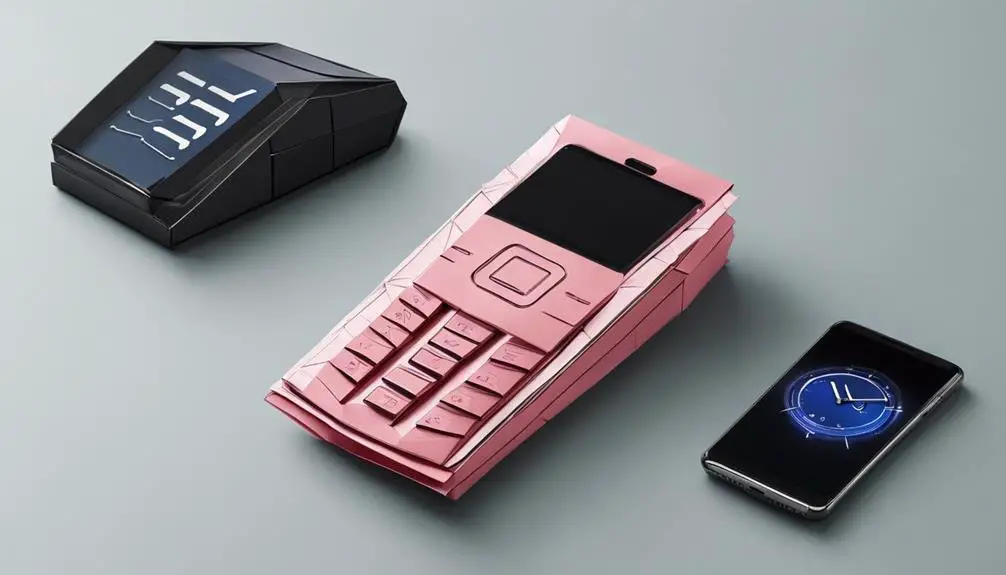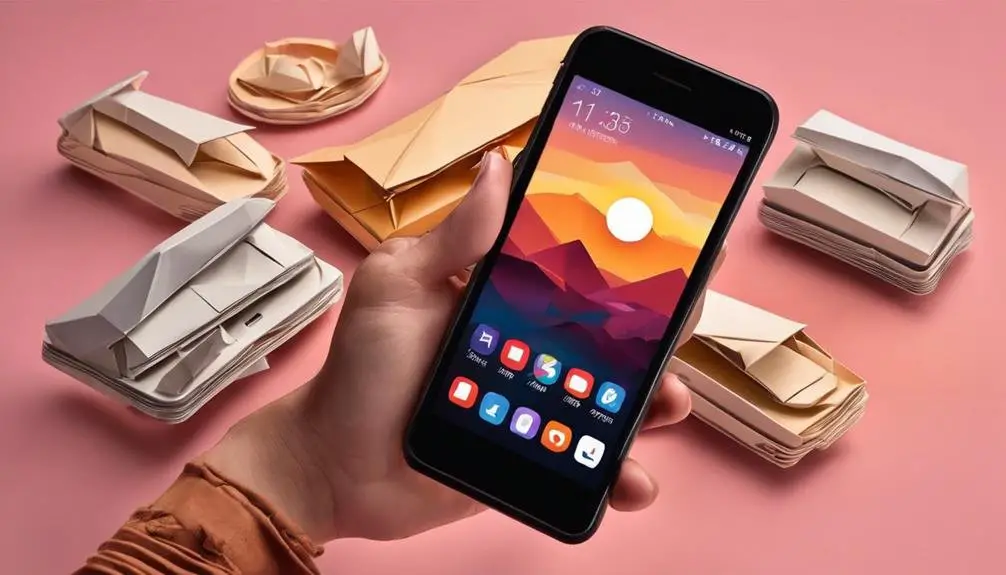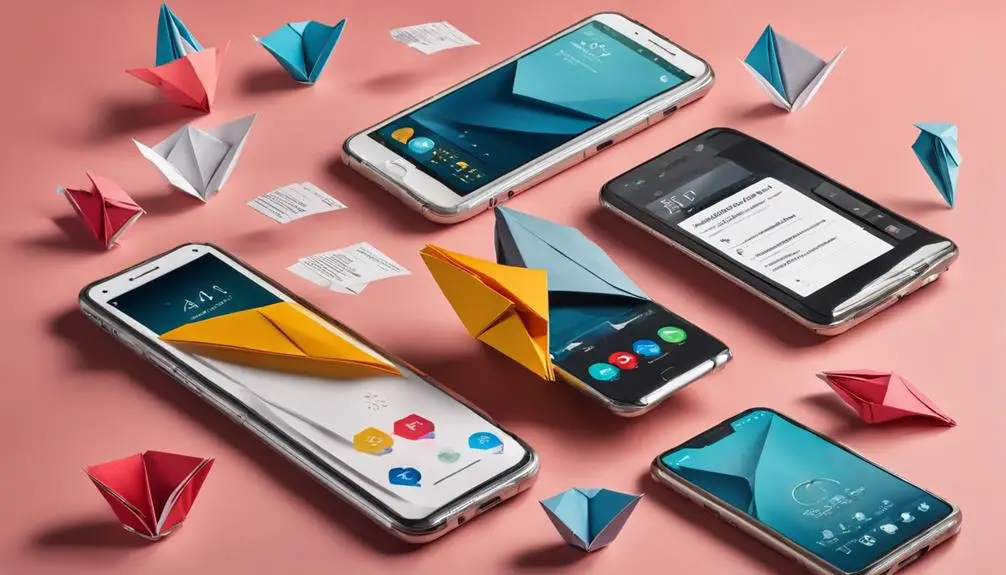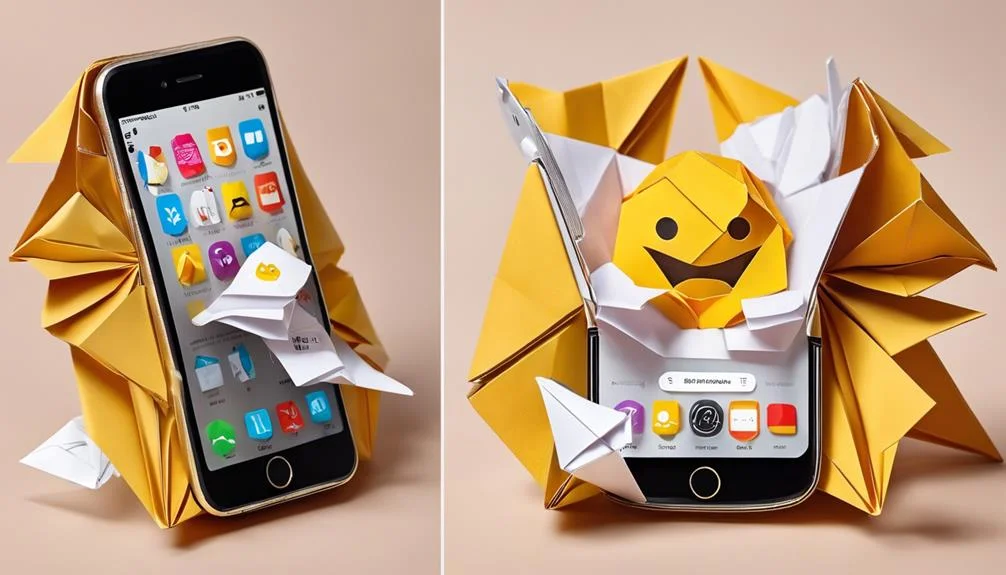The pros of flip phones are they offer enhanced portability, extended battery life, and affordability, without compromising durability. Additionally, flip phones reduce distractions, evoking a nostalgic appeal that appeals to many users.
The cons of flip phones are limited functionality, basic app availability, and restricted internet access, hindering modern connectivity. Furthermore, their inability to support advanced features and apps limits user experience and functionality compared to smartphones.
Takeaways:
- Flip phones offer compactness and longer battery life, ideal for travel and reducing digital distractions.
- Their nostalgic appeal and simplicity cater to users seeking a digital detox or retro experience.
- Limited functionality and basic app availability can hinder comprehensive internet use and advanced tasks.
- Absence of GPS, augmented reality, and robust security features restricts modern connectivity and utility.
| Pros of Flip Phones | Cons of Flip Phones |
|---|---|
| Smaller and more portable | Limited features and connectivity |
| Longer battery life | Fewer apps and basic app availability |
| More affordable | Restricted internet access |
| Enhanced security | Lack of advanced features |
| Reduced distractions | Slow performance |
| Nostalgic appeal | Inferior display quality |
| Retro design | Challenges in typing and navigation |
| Durability | Limited social media and messaging options |
| Simplicity of use | Difficulty in syncing with other devices |
| Longevity | Perception as outdated |
Pros of Flip Phones
- Smaller and more portable: Flip phones are designed to be compact and lightweight, making them more convenient to carry around than bulkier smartphones. This size advantage means they can easily fit into pockets or small bags without taking up much space. Their flip design protects the screen and keypad when closed, reducing the risk of damage during transport.
- Longer battery life: Due to their simpler functions and smaller screens, flip phones consume less power, resulting in significantly longer battery life compared to smartphones. This is particularly advantageous for users who need a reliable mobile phone that can last for days on a single charge, without the frequent need for recharging.
- More affordable: Flip phones are generally less expensive than smartphones, making them a cost-effective option for individuals on a tight budget or those who simply want a device for basic communication needs. This affordability extends to both the purchase price and the cost of maintenance and repairs, which are typically lower for flip phones.
- Enhanced security: The simpler operating systems of flip phones make them less attractive targets for hackers, offering a higher level of security against data breaches and malware. This is a significant advantage for users concerned about their privacy and the safety of their personal information.
- Reduced distractions: With fewer applications and limited internet access, flip phones offer a less distracting user experience, encouraging more direct communication and real-world engagement. This can lead to improved productivity and focus, particularly for those seeking a break from the constant notifications associated with smartphones.
- Nostalgic appeal: Many users appreciate flip phones for their nostalgic value, reminiscing about a time before the dominance of smartphones. This emotional connection can enhance the user experience, making communication feel more personal and meaningful.
- Retro design: The distinctive look of flip phones sets them apart from the uniform appearance of most smartphones, offering a unique style that appeals to users looking for something different. This retro design can be a fashion statement or a conversation starter.
- Durability: Flip phones are generally more durable than smartphones, with their design providing natural protection for the screen and keypad. This makes them more resistant to falls and physical damage, appealing to users who need a rugged device for their lifestyle or work environment.
- Simplicity of use: The straightforward interface and physical keypad of flip phones make them easy to use, especially for individuals who prefer tactile buttons over touchscreens. This simplicity is beneficial for older adults, children, or anyone who finds modern smartphones overly complicated.
- Longevity: Flip phones are often praised for their build quality and longevity, with many users reporting that their devices last for years without significant issues. This reliability is a stark contrast to the planned obsolescence frequently associated with smartphones, where users feel compelled to upgrade every few years.
Cons of Flip Phones
- Limited features and connectivity: Flip phones offer basic functionality compared to smartphones, with restricted features such as camera quality, music players, and connectivity options like Bluetooth and Wi-Fi. This limitation can be a significant drawback for users who rely on their mobile devices for more than just calls and texts.
- Fewer apps and basic app availability: The app ecosystem for flip phones is minimal, with only a basic selection of applications available. This severely limits the versatility of the device, making it unsuitable for users who depend on specific apps for communication, work, or entertainment.
- Restricted internet access: Internet browsing on flip phones is often cumbersome and limited to simple, text-based websites. The small screens and lack of sophisticated browsers make it challenging to access modern web services, hindering the user’s ability to stay connected online.
- Lack of advanced features: Flip phones miss out on the advanced features that many users have come to rely on in smartphones, such as GPS navigation, high-quality cameras, and the ability to stream video content. This absence can make flip phones feel outdated and inadequate for modern needs.
- Slow performance: Due to their basic hardware, flip phones can suffer from slow performance, especially when attempting to run the limited applications they support. This can lead to frustration for users accustomed to the fast, responsive experience of smartphones.
- Inferior display quality: The screens on flip phones are typically smaller and of lower resolution than those found on smartphones. This results in a less enjoyable viewing experience for photos, videos, and web content, diminishing the overall usability of the device.
- Challenges in typing and navigation: The physical keypads of flip phones, while durable, can be cumbersome for typing long messages or navigating through menus. This is particularly noticeable when compared to the intuitive touchscreens of smartphones, which allow for quicker and more efficient interaction.
- Limited social media and messaging options: With basic internet capabilities, flip phones are not well-suited for popular social media platforms or advanced messaging services that require apps. This can isolate users from digital communities and hinder communication with friends and family who use these services.
- Difficulty in syncing with other devices: Flip phones often lack the ability to easily sync data with computers or other smart devices, making it challenging to manage contacts, calendars, and media. This can be a significant inconvenience for users who need to keep their information coordinated across multiple devices.
- Perception as outdated: Despite their advantages, flip phones can be perceived as outdated or unfashionable, especially among younger users or in professional settings where smartphones are the norm. This perception can affect the user’s social image and might not meet the expectations of those looking to leverage the latest technology trends.
Compact and Portable
Flip phones, esteemed for their compact and portable design, offer unparalleled convenience and durability for users leading active lifestyles. These devices are notably pocketable, contrasting sharply with the bulkier smartphones that dominate today’s market. This makes flip phones effortlessly easy to carry around, ensuring they can seamlessly integrate into the busy lives of individuals who are always on the move. The inherent sturdiness of flip phones further enhances their appeal, presenting a reliable option for mobile communication in a variety of situations. Whether it’s being tossed into a gym bag, dropped on a hiking trail, or simply used in the hustle and bustle of daily life, the durable construction of flip phones can withstand a considerable amount of wear and tear.
Moreover, the compact and portable nature of flip phones isn’t just about physical convenience; it also taps into a nostalgic appeal, captivating users who value a retro fashion statement alongside functionality. This blend of simplicity, convenience, and classic design makes flip phones a preferred choice for those seeking a straightforward and effective communication device without the complexities and fragilities often associated with modern smartphones.
Longer Battery Life

One of the most lauded advantages of flip phones is their ability to sustain power for days on end, outperforming smartphones in battery longevity. This extended battery life is not just a minor convenience but a significant benefit for various users, including travelers, outdoor enthusiasts, and anyone who might find themselves away from power sources for extended periods. The reliability of flip phones to last several days on a single charge ensures that users can remain connected and accessible without the constant need for recharging.
Flip phones achieve this impressive battery longevity thanks to their minimal power consumption. Unlike smartphones, which are power-hungry due to their large, bright screens and multitude of running applications, flip phones are designed for simplicity and efficiency. This means that their batteries can support basic functions like calling and texting for much longer, without the drain experienced by more complex devices.
For individuals prioritizing battery performance in their mobile device, flip phones present a compelling advantage. Their ability to provide reliable performance over an extended period, without frequent recharges, sets them apart in the realm of mobile technology, making them an ideal choice for specific needs and lifestyles.
Reduced Distractions

In today’s hyper-connected world, the simplified interface of flip phones significantly reduces distractions, allowing users to focus more effectively on the task at hand. The allure of constant connectivity, while beneficial in many ways, can also serve as a continuous source of interruption. Flip phones, with their limited functionality, offer a compelling solution to this modern-day dilemma. By providing just the basics like calling and texting, these devices help individuals disconnect from the pervasive digital noise, fostering an environment conducive to enhanced concentration and productivity.
The absence of advanced features and app support, often considered a drawback, is precisely what enables users to maintain a sharper focus on essential tasks without the constant temptation to scroll through social media or respond to non-urgent notifications. This minimalist approach to mobile technology not only contributes to reducing digital distractions but also promotes a more intentional and mindful use of technology.
In essence, flip phones offer a sanctuary of sorts, a space where users can retreat from the digital world’s demands and distractions, thereby reclaiming their time and attention for more meaningful activities and interactions.
Nostalgic Appeal

The nostalgic appeal of flip phones is not merely about their functionality but also their design and the memories they evoke.
Retro design charm, emotional connection, and era-specific features contribute to their resurgence in popularity among certain demographics.
These aspects underscore the unique appeal of flip phones, setting them apart from contemporary smartphones.
Retro Design Charm
Embracing a blend of nostalgia and style, flip phones captivate users with their retro design charm, reminiscent of a simpler technological era. This allure is not just about the physical act of flipping the phone open and closed; it’s about the iconic look that stands out in a sea of modern smartphones.
The classic design of flip phones adds a distinctive touch of elegance and simplicity to users’ daily lives, positioning these devices as more than just communication tools but as fashion statements. For those seeking a departure from the ubiquitous flat, touch screen devices, the nostalgic charm of flip phones offers a refreshing alternative, attracting individuals who appreciate the blend of vintage technology with contemporary functionality.
Emotional Connection
Many individuals find themselves drawn to flip phones, not just for their practical functions, but for the emotional connections and nostalgic appeal these devices evoke. The allure of flip phones transcends mere utility, touching on deeper sentiments of simplicity and a yearning for the past.
For some, these devices are reminiscent of a time when life was less complicated, and communication more straightforward. The emotional resonance of flip phones is a testament to their enduring charm, offering a tangible link to past experiences and memories.
- Nostalgic Appeal: Resonates with users’ fond memories of simpler times.
- Retro Fashion Statement: Appeals to those valuing vintage technology and design.
- Desire for Simplicity: Fulfills a longing to disconnect from the digital overload and embrace straightforward communication.
Era-Specific Features
Building on the emotional connections discussed earlier, era-specific features of flip phones significantly contribute to their nostalgic appeal.
The retro design of these devices, reminiscent of simpler times, plays a prominent role in their allure. With features like T9 predictive text, which allows for faster texting through number keys, flip phones cater to individuals who value nostalgia and simplicity.
Their compact size and classic flip-open mechanism further enhance this appeal, evoking memories of a bygone era. This sense of nostalgia and emotional attachment not only differentiates flip phones from modern smartphones but also makes them a preferred choice for users looking to reconnect with the simplicity and charm of the past.
Limited Functionality

Transitioning from the nostalgic appeal of flip phones, we must also consider their limited functionality.
While they provide basic app availability and a simplified user interface, these devices fall short in offering comprehensive internet access and the rich feature sets of modern smartphones.
This restriction impacts users by limiting not only the breadth of applications and services available but also the overall user experience in a digitally connected world.
Basic App Availability
Flip phones, known for their compact design and basic functionality, often come with significant limitations in app availability, particularly for popular social media platforms and modern applications. This restriction is primarily due to their limited processing power and compatibility issues, which make it challenging to run or even access certain apps. Users primarily interested in calling and texting may find this acceptable, but those seeking a broader range of functionalities might experience frustration.
- Basic functionality includes calling, texting, and some preloaded apps for simple tasks.
- Lack of support for downloading additional, more advanced applications.
- Users may face compatibility issues when trying to use or access certain apps, leading to a potentially frustrating experience.
Restricted Internet Access
While flip phones offer the convenience of portability and simplicity, their limited internet access significantly restricts user experience in terms of browsing and connectivity. These devices lack the advanced features and connectivity options available on modern smartphones, which can hinder work tasks, efficient internet usage, and overall connectivity.
This limitation not only affects productivity but also raises privacy concerns due to the absence of robust security features for personal data protection. Furthermore, users may find it challenging to access online resources and modern applications, which have become integral to daily life.
The restricted internet access of flip phones, therefore, presents a significant drawback for users accustomed to the comprehensive functionalities offered by more technologically advanced devices.
Simplified User Interface
Building on the discussion of restricted internet access, the simplified user interface of flip phones further limits their functionality, offering basic features such as calling and texting but lacking in advanced app support. This limitation significantly impacts one’s ability to complete work tasks efficiently and enjoy the breadth of internet access that smartphones provide.
- T9 predictive text facilitates quicker texting but does not support popular messaging platforms, constraining communication options.
- The nostalgic appeal and simplicity of flip phones cater to those who prioritize these aspects over modern technological advancements.
- A lack of advanced features severely restricts productivity and connectivity, rendering flip phones less suitable for professional and social contexts that rely heavily on app-based interactions.
Lack of Advanced Features

One significant limitation of flip phones is their absence of advanced features that are standard in modern smartphones. This gap primarily manifests in the lack of GPS navigation, augmented reality, and virtual assistants, which have become cornerstones of the contemporary mobile experience. For users accustomed to the convenience of asking a virtual assistant for weather updates, directions, or to perform internet searches, flip phones fall short.
Furthermore, the physical design constraints of flip phones, such as the absence of touchscreens, significantly limit user interaction. Advanced gestures like pinch-to-zoom or multi-touch, which enhance usability and accessibility on smartphones, are simply not possible.
Moreover, flip phones’ limited connectivity options restrict activities that require high data usage or continuous internet access, such as video streaming, online gaming, or using cloud-based services. This limitation not only affects entertainment and leisure activities but also hampers productivity tasks that rely on seamless internet connectivity.
Additionally, modern convenience features like facial recognition for secure unlocking, biometric authentication for transactions, and the ease of wireless charging are not available on traditional flip phone models, further widening the feature gap between flip phones and smartphones.
Internet and App Accessibility

Flip phones’ limited internet capabilities significantly hinder efficient web browsing and access to a broad spectrum of applications. These devices, while offering the essentials of mobile communication, fall short in providing a seamless online experience. Due to their restricted app compatibility, users cannot enjoy the vast array of functionalities and conveniences offered by smartphones. This limitation not only affects the ability to use popular apps and social media platforms but also impacts the efficiency of basic tasks like messaging and group chats, which, although supported, come with their own set of constraints.
- Limited App Compatibility: Most flip phones cannot run popular apps or social media platforms, significantly reducing their utility in today’s app-centric world.
- Inefficient Web Browsing: The internet capabilities of flip phones are rudimentary at best, making any form of web browsing a cumbersome experience.
- Constrained Messaging Features: While basic messaging is possible, group chats and other advanced messaging features are limited, affecting communication fluidity.
Despite these drawbacks, flip phones incorporate T9 predictive text for faster texting using the number keys, highlighting a blend of simplicity and efficiency in basic messaging and communication functionalities, albeit without the advanced features of smartphones.
Conclusion
In conclusion, flip phones offer a unique blend of advantages and disadvantages. Their compact design and extended battery life cater to those prioritizing portability and longevity in device usage. The reduction in distractions and the nostalgic appeal further enhance their attractiveness to a specific demographic.
However, the limited functionality and absence of advanced features, alongside restricted internet and app accessibility, present significant drawbacks. These limitations underscore the trade-offs between simplicity and modern technological demands associated with flip phones.